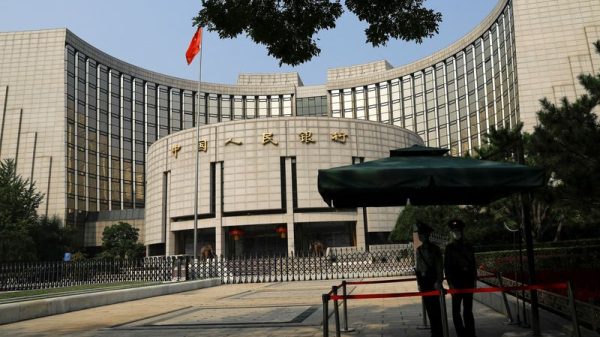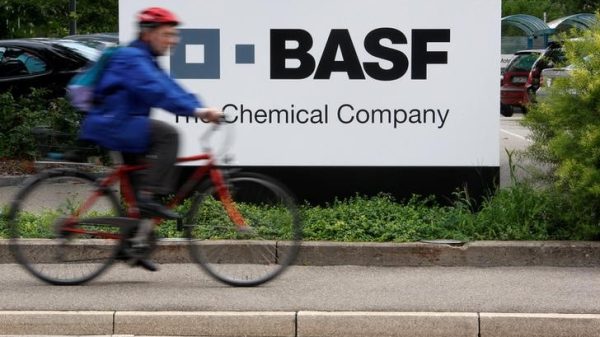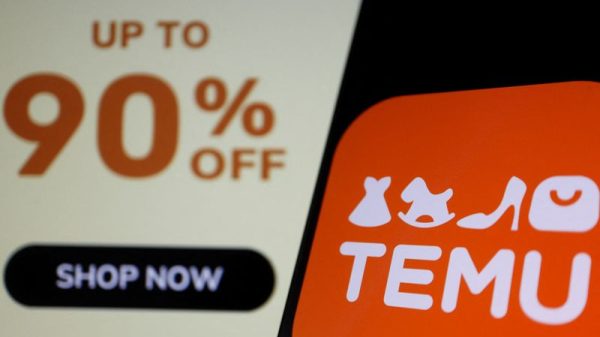Sensient Technologies Corporation (NYSE: NYSE:SXT) has reported a strong third-quarter performance in 2024, with CFO Tobin Tornehl and CEO Paul Manning announcing significant local currency revenue and adjusted EBITDA growth.
The company’s revenue for Q3 2024 reached $392.6 million, marking an approximate 9% increase from the same period last year. Adjusted EBITDA grew by 13%, with the adjusted EBITDA margin at 17.6%. Sensient’s Color Group experienced a notable 13% revenue growth and a 31% operating profit growth.
The company also anticipates high single-digit growth in local currency revenue and adjusted EBITDA for the full year, with a mid-single-digit rate growth in adjusted EPS, influenced by higher taxes and interest expenses.
Key Takeaways
Sensient Technologies Corporation’s Q3 2024 revenue increased to $392.6 million, up from $363.8 million in Q3 2023.
Adjusted EBITDA rose by 13%, with a margin of 17.6%.
The Color Group and the Flavors & Extracts Group reported significant revenue and operating profit growth.
Full-year projections include high single-digit growth in local currency revenue and adjusted EBITDA.
Adjusted EPS is expected to grow at a mid-single-digit rate, affected by higher taxes and interest expenses.
Company Outlook
For the full year, Sensient expects high single-digit revenue growth in local currency and adjusted EBITDA.
The company anticipates mid-single-digit revenue growth for 2025.
Portfolio optimization is expected to yield $8 million to $10 million in savings.
Sensient aims to reduce its net debt to credit-adjusted EBITDA ratio to the low 2s by next year.
Bearish Highlights
Higher taxes and interest expenses are projected to be headwinds for EPS growth in 2024.
Sensient’s Q3 EBIT margins for the Colors segment were slightly below Q2’s at 18.4%.
Bullish Highlights
The company reported 9% volume growth in Q3, attributed to new customer wins.
Revenue growth was particularly strong in natural colors, with over 20% growth in Q3.
Sensient is confident in sustained mid-single-digit growth in personal care through 2025.
Misses
Despite robust growth, the company’s Q3 EBIT margins in the Colors segment slightly decreased compared to Q2.
Q&A Highlights
The company discussed performance in personal care and pharmaceutical markets, noting regulatory changes as a significant driver for innovation.
Sensient emphasized its focus on reducing debt and interest expenses in a high-interest-rate environment.
Sensient Technologies Corporation has demonstrated a solid performance in the third quarter of 2024, with growth across multiple segments and a positive outlook for the upcoming year. The company’s strategic focus on natural colors, customer-centric approach, and cost-saving initiatives are expected to continue driving revenue and profit growth. Despite facing headwinds from higher taxes and interest expenses, Sensient remains committed to reducing its leverage ratio and maintaining strong financial health.
InvestingPro Insights
Sensient Technologies Corporation’s strong Q3 2024 performance is further supported by data from InvestingPro. The company’s market capitalization stands at $3.32 billion, reflecting its significant presence in the specialty chemicals industry.
One of the most notable InvestingPro Tips is that Sensient “has maintained dividend payments for 54 consecutive years.” This impressive track record of consistent dividends aligns with the company’s solid financial performance and could be particularly attractive to income-focused investors. The current dividend yield is 2.12%, as reported by InvestingPro Data.
Another relevant InvestingPro Tip indicates that Sensient is “trading near its 52-week high,” which corroborates the positive momentum discussed in the earnings report. This is further supported by the InvestingPro Data showing a strong 43.15% price total return over the past year.
The company’s profitability, as highlighted in the earnings report, is reinforced by an InvestingPro Tip stating that “analysts predict the company will be profitable this year.” This is consistent with the reported revenue growth and positive outlook for the full year.
InvestingPro Data shows that Sensient’s revenue for the last twelve months as of Q2 2024 was $1.50 billion, with a revenue growth of 3.32%. This aligns with the company’s projection of high single-digit growth in local currency revenue for the full year.
It’s worth noting that InvestingPro offers additional insights, with 7 more tips available for Sensient Technologies Corporation. These extra tips could provide valuable context for investors looking to deepen their understanding of the company’s financial position and market performance.
Full transcript – Sensient Technologies Corp (SXT) Q3 2024:
Operator: Good morning, and welcome to the Sensient Technologies Corporation 2024 Third Quarter Earnings Conference Call. All participants will be listen-only mode. [Operator Instructions] After today’s presentation, there will be an opportunity to ask question. [Operator Instructions] Please note, this event is being recorded. I would now like to turn the conference over to Mr. Tobin Tornehl. Please go ahead, sir.
Tobin Tornehl: Good morning. Welcome to Sensient’s earnings call for the third quarter of 2024. I’m Tobin Tornehl, Vice President and Chief Financial Officer of Sensient Technologies Corporation. I’m joined today by Paul Manning, Sensient’s Chairman, President and Chief Executive Officer. Earlier today, we released our 2024, third quarter results. A copy of the earnings release and the slides we’ll be using during today’s call are available on the Investor Relations section of our website at sensient.com. During our call today, we will reference certain non-GAAP financial measures, which remove the impact of currency movements, cost of the company’s portfolio optimization plan and other items as noted in the company’s filings. We believe the removal of these items provides investors with additional information to evaluate the company’s performance and improves the comparability of results between reporting periods. This also reflects how management reviews and evaluates the company’s operations and performance. Non-GAAP financial results should not be considered in isolation from or a substitute for financial information calculated in accordance with GAAP. A reconciliation of non-GAAP financial measures financial measures to the most directly comparable GAAP measures — is available in our press release and slides. We encourage investors to review these reconciliations in connection with the comments we make today. I’d also like to remind everyone that comments made during this call, including responses to your questions, may include forward-looking statements. Our actual results may differ materially from those that may be expressed or implied due to a wide range of factors, including those set forth in our SEC filings. We urge you to read Sensient’s previous SEC filings, including our 10-K and our forthcoming 10-Q for a description of additional factors that could potentially impact our financial results. Please keep these factors in mind when you analyze our comments today. As we introduced during our last quarterly call, we will be referring to a slide deck that will be referenced through today’s call. This slide deck is also available on our website. We’ll start on slide 5 of that deck. Now, we’ll hear from Paul Manning.
Paul Manning: Thanks, Tobin. Good morning and good afternoon. Sensient reported strong local currency revenue growth of approximately 9% in the third quarter. This revenue increase was primarily volume driven with price contributing low single digits. Our consolidated local currency adjusted EBITDA was up 13% for the third quarter of 2024. The company’s third quarter adjusted EBITDA margin was 17.6%, up 60 basis points from the prior year’s third quarter. With the continued resumption of volume growth across the groups, we expect revenue and EBITDA growth to continue to be strong in the fourth quarter. The volume improvement is due to our high level of new sales wins across each of our groups, our focus on sales execution, the end of customer de-stocking and the stabilization of end customer demand in North America and Europe. Our sales pipelines remain robust in each of our regions. Each group is focused on expanding new sales win rates and working with our customers to support their development needs and new product launches. Turning to slide 6. The Color Group had an excellent quarter, delivering 13% local currency revenue growth and 31% local currency operating profit growth. The group’s third quarter EBITDA margin was 22.2%, an increase of 250 basis points versus the prior year’s third quarter. The group’s year-to-date local currency revenue is now up 5% and local currency operating profit is up approximately 11%. We saw solid volume growth in both the food and pharmaceutical and personal care product lines. We expect this volume growth to continue throughout the remainder of the year. The group is benefiting from its strong new sales wins, particularly in natural colors, innovative products and exceptional customer service. As we expected and discussed during our last few calls, volume is the main driver of the strong operating leverage we now see in the Color Group. We expect this leverage to continue fourth quarter, and we expect the relationship between local currency revenue and operating profit growth in the fourth quarter to be similar to the group’s third quarter results. For the year, I now expect the Color Group to deliver high single-digit local currency revenue growth. Previously, I expected the group to deliver mid to high single-digit growth. Turning to slide 7. The Flavors & Extracts Group had a strong quarter, delivering 7% local currency revenue growth and 13% local currency operating profit growth. The group’s third quarter EBITDA margin was 16.4%, up 30 basis points versus the prior year’s third quarter. The group’s year-to-date local currency revenue is up 8% and local currency operating profit is up approximately 9%. The group continues to benefit from its strong new sales wins, its innovative product offerings and its focus on sales execution and customer service. The flavors, extracts and flavor ingredient product lines reported solid volume growth in the quarter, which contributed to the group’s operating leverage improvement. We expect this leverage to continue in the fourth quarter, and we expect the relationship between local currency revenue and operating profit growth in the fourth quarter to be similar to the group’s third quarter results. For the year, I now expect the Flavors Group to deliver a high single digit local currency revenue growth. Previously, I expected the Flavors Group to deliver mid to high single-digit growth. Now turning to slide 8. The Asia Pacific Group reported 13% local currency revenue growth and 15% local currency operating profit growth in the third quarter. The group reported a strong third quarter EBITDA margin of 23.8%, which is in line with prior year. The group’s year-to-date local currency revenue is up 9% and local currency operating profit is up approximately 8%. The group continues to experience solid growth in all regions and continues to have a high level of new sales wins. The group is performing very well, and I expect Asia Pacific to have a strong finish in 2024. I expect the group to deliver in the fourth quarter, at least what the group delivered in the third quarter for local currency revenue and operating profit growth. I expect the Asia Pacific group to deliver at least high single-digit revenue growth for the full year of 2024. Turning to Slide 9. After challenging 2023, Sensient’s 2024 performance puts us back on track with our long-term goals of mid single-digit local currency revenue growth and high single-digit local currency adjusted EBITDA. In 2024, we now expect to deliver consolidated high single-digit local currency revenue and adjusted EBITDA growth. We previously expected to deliver mid to high single-digit growth for both local currency revenue and adjusted EBITDA. We also expect to deliver mid single-digit local currency adjusted EPS growth. The reason for the mid single-digit adjusted EPS growth is primarily because of higher taxes and higher interest expense. Looking ahead to 2025, we expect our local currency revenue to grow at a mid single-digit rate. We expect a decrease in our interest expense as a result of our focus on debt repayment and a lower expected interest rate environment. We also expect our tax rate to be relatively flat at approximately 25%. As we began do last quarter, we thought it would be helpful to highlight a few new technologies within our businesses. Turning to Slide 10. We’ve highlighted a couple of our flavor technologies. The first profile is called SensaMelts. SensaMelts is a novel technology that allows our bakery and savory customers to incorporate color and flavor bursts into their end products. Bakery and savory products are known for challenging production conditions, which typically degrades the performance of flavor and color. SensaMelts technology can overcome these challenging manufacturing conditions, extend product shelf life and maintain the desired flavor profile. Trueboost is a second technology we’d like to highlight. It is a portfolio of products that supports our customers’ continuing efforts to reduce sugar and salt, amplify the boldness of flavors and enhance the overall mouth feel of products by importing juiciness and creaminess to the end product. Trueboost provides natural and clean label benefits across all of our customers’ end markets. More information on these technologies and others can be found at our website. Overall, the growth we’re experiencing is a direct result of the implementation our strategy and the opportunities from the markets we have chosen to operate in. I’m excited about the growth opportunities within each of our groups and I remain optimistic about 2024 and the future of our business. Tobin will now provide you with additional details on the third quarter results.
Tobin Tornehl: Thank you, Paul. In my comments this morning, I’ll be explaining the differences between our GAAP results and our non-GAAP or adjusted results. The adjusted results for 2024, we moved the cost of the portfolio optimization plan. We believe the removal of these costs produces a clear picture of the company’s performance for investors. This also reflects how management reviews the company’s operations and performance. Turning to Slide 12. Sensient’s revenue was $392.6 million in the third quarter of 2024 compared to $363.8 million in last year’s third quarter. Operating income was $50.5 million in the third quarter of 2024, compared to $44.5 million of income in the comparable period last year. Operating income in the third quarter of 2024 includes $1.2 million of portfolio optimization plan costs, which is approximately $0.03 per share. In the fourth quarter of 2023, we incurred $28 million of portfolio optimization plan costs. So far this year, we’ve incurred approximately $5.8 million of additional costs. Excluding the cost of the portfolio optimization plan, adjusted operating income was $51.7 million in the third quarter of 2024 compared to $44.5 million in the prior year period, an increase of 17.1% in local currency. The company’s consolidated adjusted tax rate was 23.1% in the third quarter of 2024, compared to 17.5% in the comparable period of 2023. Local currency adjusted EBITDA was up 12.8% in the third quarter of 2024 and up 5.5% for the year-to-date period. Foreign currency translation reduced EPS by approximately $0.01 in the third quarter of 2024. Turning to Slide 13. Cash flow from operations was $136 million for the nine months ended September 30, 2024, up 27% compared to last year’s comparable period. Capital expenditures were $36 million year-to-date as of September 30, 2024. We expect our capital expenditures to be between $60 million and $65 million for the year. Our net debt to credit adjusted EBITDA is 2.4. With the continued high interest rate environment, we remain focused on reducing our debt levels and our interest expense. Overall, our balance sheet remains well positioned for future investments. Turning to Slide 14. As Paul noted, we have increased our 2024 local currency revenue and local currency adjusted EBITDA to grow to a high single-digit growth rate for the year. We continue to expect our interest expense to be up approximately $4 million for the year compared to our 2023 full year interest expense. We expect our 2024 full year adjusted tax rate to be around 25% compared to 23.4% in 2023. We continue to expect our local currency adjusted EPS to grow at a mid-single-digit rate in 2024. What this implies for the fourth quarter is that we expect our local currency revenue to grow at a high single-digit rate, and our local currency adjusted EBITDA to grow a high-teen growth rate. We expect our fourth quarter interest expense to be around $7 million, and we expect our adjusted tax rate to be approximately 25%. We expect our local currency adjusted EPS to grow at a low 20% growth rate in the fourth quarter. In considering our GAAP earnings per share in 2024, we continue to expect our GAAP EPS to be between $2.77 and $2.87 per share. Our GAAP EPS includes approximately $0.18 of portfolio optimization plan costs. Thank you for participating in the call today. We’ll now open the call up for questions.
Operator: We will now begin the question-and-answer session [Operator Instructions] The first question comes from Ghansham Panjabi with Robert W. Baird & Co. Please go ahead.
Matt Krueger: Hi. Good morning, everyone. This is Matt Krueger sitting in for Ghansham.
Paul Manning: Hey Matt.
Matt Krueger: So — my first question, I wanted to focus a bit on the volumes for the quarter. Obviously, the volume performance was quite strong. By segment, can you break out what portion of your volume growth do you feel was due to end market normalization due to the lack of destocking versus what portion of the volume growth is really sustainable kind of following the washout of the comparisons on a year-over-year basis as we move forward?
Paul Manning: Okay. So, overall, if you look at Q3, we were up revenue 9% for the company, price being kind of 2, 3 — low single-digit type level. So, you figure about 6%, 7% volume overall. Now it varies a bit with Asia-Pacific having double-digit volume, Color having double-digit volume and Flavors more like mid-single-digit volume. And so to answer the question explicitly, sure, there’s a number of factors here. So, the end market, you heard me talk about for the last couple of years as we measure the market, the North American market, the volume of our end customers was down 1% to 2% in terms of volume. Europe was kind of flattish, maybe up 1%, and then, of course, things vary by Asia-Pacific and LatAm. So, now as we look at the market in North America, volume amongst all of our customers selling their product is more like flat. So we don’t have that 1% to 2% headwind in our biggest market in North America. Europe is still fairly consistent. So, figure maybe a portion of it was that, the no destocking. So, this is where I think the differences in the groups will come out a little bit more, obviously. That destocking impact, I think it was reprofiled last year, it was running anywhere from low to mid and in some cases, even high single-digit headwinds. And so Colors was largely at the peak of the destocking last year Q3. Flavors was not as much destocking last year Q3. You recall that Flavors has kind of got a lot of their destocking out of their way faster than Colors did. So, net-net, kind of to your question, what does this look like into the future? 2025, we’re guiding in accordance with our long-term guidance, mid-single-digit revenue where we anticipate pricing to be low single and the balance to be made up from volume. So, specifically to Q3, a couple of points in the market, say, low to mid on the destocking, not happening as strongly in color. But the majority of the volume growth in Colors and Flavors in Asia-Pac are largely our new wins, which continue to be very, very strong in each of the regions. We had a particularly nice uptick in Asia-Pacific and our new wins. So, yes, while some of this is favorable comparisons to last year and again, not having that destock, not having the market growth headwind by and large, the volume growth is stemming from new wins. And this is why I have confidence that we can keep up that level of new wins into 2025 and that should translate nicely and support the mid-single-digit projections.
Matt Krueger: That’s great. That’s very helpful. And kind of building on that a little bit. You already mentioned that you expect volumes to be kind of in line with the long-term expectation or guide or target. Are there any other high-level variances for 2025 that you can provide us maybe expected contribution from the productivity initiatives that you have ongoing or any other notable kind of variances as we try to bridge to 2025 estimates?
Paul Manning: Yeah. I think with that volume, as I just gave you for 2025, those expectations and low single-digit pricing, we expect to continue to get this nice operating leverage, maybe not to the levels you’re seeing right now. This is in part recovery from last year’s weaker Q3, weaker Q4. But yeah, I think — as you think about 2025, what’s going to feed into that. First and foremost, it’s always new wins. That is the fundamentally most important metric we track as a company. That is the true barometer of the strength of the strategy, the strength of our execution, strength of our service levels, the strength of our product technologies, all governance starts as I see it with new win rates, which continue for us to be very, very high, I think, kind of low to mid-teens rate as a percentage of revenue. So that’s going to, I think, continue in earnest. And so couple of the variances that we expect to potentially play out a little bit differently in 2025. So number one, I mean, if the market, I would love it if the market would just be flat in Europe and North America. I’m not asking for a lot, just when it’s down 2%, 3%, though, that’s a little bit of a headwind. So my expectation is these markets in North America and Europe, our two largest markets would be largely flat. There would potentially be upside to the market growth of LatAm and of course, in Asia. And as much as you hear talk out of China, we still see growth in China, perhaps it’s not as strong as it has been in the past, but it’s still solid, strong growth for us. So I think that will be a positive. One of the things we saw during COVID, you heard a lot of companies talking about SKU rationalization, right? It’s like, hey, we can’t even get our core products on the shelf, forget product number 300, that drives a very small part of our revenue. And so many of our customers, many CPG companies commissioned programs around SKU rationalization, which takes time and they can be complex. And so some of the discontinuations that we have seen in the market in 2023 and in 2024, I believe, and I think we could say that across most of our businesses, I would point to a lot of these initiatives around SKU rationalization, I’d like to think that, that could moderate in 2025, but my crystal ball is a little foggy on that one. But if discontinuation rates subside a little bit, that could be another touch of upside. To your point about the portfolio optimization, we remain on track there. I think that’s going to go very, very well. We expect to have very, very strong savings from that program. As you recall, we estimated $8 million to $10 million of savings. We remain on track there. We expect on the cost side of that, the $40 million of charges. We’re still right about in that ballpark with, again, the vast majority of that being non-cash related. So the timing of those, some of that is 2024. Some that is 2025. Some of that is 2026. So I think that would certainly give further credence to our operating leverage projections and our improvements in operating profit growth. But I think the big thing and the question that folks have is like, hey, guys, the EBITDA growth looks good and the profit looks good. Why is that not translating to EPS growth? And there’s two words, tax and interest. That’s why. And so you look at 17% OP growth in Q3, and you’re like, why is it 8% EPS, tax and interest, and those are the single biggest headwinds to EPS growth and why we’re not getting that flow through. So you’ll start to see us lapping some of that here in Q4. You heard Tobin estimate substantially higher growth rates on EPS. And so tax, we expect that not to be a headwind in 2025. So that’s an important flow through to EPS. And interest rates, you saw a headwind there. I think that’s somewhere around the order about $0.08 for the year in terms of EPS headwind interest. So I’d like to think that, that will also not be a headwind and possibly could be a slight tailwind with less debt and potentially actions from the Fed. So those are some of the variances that we would, at this point, as I’m sitting here in late October, we could reasonably project for 2025.
Matt Krueger: Great. That’s very helpful Paul. That’s it for me. I’ll step back in the queue.
Paul Manning: Okay, Matt.
Operator: The next question comes from Nicola Tang with BNP. Please go ahead.
Nicola Tang: Hi, everyone. Thanks for taking my question.
Paul Manning: Hi, Nicola.
Nicola Tang: Hello. First, maybe picking up on your comments there on new wins, I think you mentioned low to mid-teens as a percentage of revenue, which is pretty impressive. Can you talk a little bit about what’s driving this? Is it customers who are looking to reformulate? Is it penetration and wins with new customers? Just trying to understand a bit what’s driving this momentum and what’s giving you confidence as we look into 2025. That’s the first one.
Paul Manning: Okay. So I think it’s very much part of our program here in the company. Great ideas are great, but it’s really the ability to implement and execute on those ideas. So our sales force has done a really, really nice job, the leadership in each of our business units who are driving these sales folks and supporting them working with them. It’s a big part of the success. Doing your job, being responsive to customers, understanding what they really need. And so I would put the first one at sales execution and the ability to service customers exceedingly well. Number two, I would tell you that a lot of our product line has really driven a good deal of success here. I’ll note natural colors, which has had — our growth there has been very, very strong this year. And I think that some of that is related to new launches. We typically discuss a launch rate of about 80% of new products containing natural colors. So I think that is a big part of it. So some of that is the market we chose to emphasize. But just to give you some perspective, we’re up double digits on natural color growth, and in fact, we were up more than 20% of natural colors in Q3. So that’s been a big driver. A lot of that just new launch activity. There is some conversion activity in the market. But by and large, the lion’s share of new launches contain natural colors, and we have built a really strong outstanding natural color business with great products coming from a really strong new product development program, a very robust supply chain that we continue to invest in and a really strong capital program, where we’ve invested in our plants to bring customers the types of volumes and performance they would expect in this kind of market. So it’s a very complex market, and you have to really be fully invested in it. And I think a lot of that growth we’re seeing right now are the fruits of many of investments we’ve made probably over the last 15 to 20 years, quite frankly. So I think that’s very important. I think we continue in the flavor group to emphasize the local and the regional customer base from start-ups to more established brands. And I think level of service and the level of innovation we’re able to bring them part and partial with the execution piece, but customer selection has been a big part of our success as well. We work very hard to identify where we can be successful and really emphasize those types of products and related to that, the focus on selling more flavors. Years ago, we didn’t have nearly the same focus we do today on selling flavors. Flavors generally constitute the most defensible products that we have in our entire portfolio. They are very technically driven in most cases, and they rely on a lot of applications and formulation support from the business. So I think that’s been another big drivers. So it’s really a combination of the markets we’ve chosen, right? We got out of a lot of those industrial businesses after our restructuring actions were completed and we really honed in on food, pharma and personal care. So that’s a big part of it. The types of products and technology we’re able to deploy and natural colors and flavors in particular. And then, of course, as I led off with the very strong sales execution. So I think these are the things that really would drive that success. Many other factors, but those would be sort of top three that come to mind.
Nicola Tang: That’s great. Second one, I want to talk a bit about personal care. I think some of the larger players like beauty care players have been flagging a slowdown or fears of a slowdown in the industry, particularly in North America and in China. I was wondering whether that’s something that you see as a risk? Or do you see any signs of slowdown in your personal care business? I know it was pretty strong in the last quarter, but I’m just trying to think ahead a little bit?
Paul Manning: Yes. Well, I would say that personal care has had a really good year. A lot of nice sales within our makeup category. We’ve been quite strong there. Body wash, we’re doing very, very well. Skin care, and so here again, I think we’ve emphasized certain segments within personal care, which we’ve done very, very well with. We certainly also have in our personal care ingredients business, we have a number of products that fit within the fragrance market, which, as you know, is doing quite well right now. So I would say this, personal care above any of the other markets we serve, the timing of where our customers are and where we are can have significant lags. Some of this stems from the shelf life of these products. It provides a level of flexibility for us and for our customers. But there’s been a lot of changes in the personal care market. Something like north of 20% of that market is now transacted through e-commerce. And many, many years ago, that number was probably more like about 2%. So there’s been a lot of change there. There’s been — the growth influencers and other brands that are low capital-intensive brands that utilize contract manufacturers has driven a lot of the changes in that market as well. So it’s not just large multinationals driving that industry. There’s a lot of third-party manufacturers really throughout the world, supporting upstart brands, influencer brands, Indies, whatever you want to call them. And so, yes, while there may be some who in the market are customers who are having a little bit of a struggle right now, there’s also plenty who are doing quite well. And so as you look ahead to 2025, we have a very high level of confidence that we’re going to continue to perform, not to 17%. I don’t think that’s a realistic long-term expectation. But certainly, that mid single digit, maybe a little bit higher in some regions and maybe about that in other regions. I think it’s a very sustainable level. And there, again, mostly driven by volume, mostly driven by the selection of these customers, the implementation or the execution amongst the sales force and then, of course, having really good products.
Nicola Tang: Thank you. It’s actually quite nice way into my last question, which is on your long-term targets. Thanks for articulating them in the slides. On the revenue, the mid-single digits, can you just remind us of your ambitions by division, does that help by division? And then in terms of the EBITDA, the high single-digit EBITDA growth rate, can you talk us through the key levers here and where you see the most upside in terms of — yes, from a margin perspective? Is it more on the Flavors and Extract side? Just remind us the moving parts? Thanks.
Paul Manning: Yes. So I think the mid-single digit is a good average that is used across the three groups. I mean clearly, Asia Pacific has been operating above that. So yes, they may have a little bit of a higher opportunity there. But of course, that’s also a smaller part of the portfolio. Certainly, as you look at things like natural colors, they’re going to be on the higher end of that, possibly even above that range, certain segments of personal care, certain segments within flavor. So without getting into 26 shades of gray here, I would say, mid-single digit across the groups would be a pretty good proxy. And we’ll keep you posted as we go along during the course of the year, where will we sort of above that where we a little bit below that. With respect to your question around leverage, yes, I think a lot of that is going to be the product mix, the types of products we’re emphasizing and where we have been emphasizing, a very, very strong focus on cost and maintaining costs and not letting costs get out of control from a production standpoint and from an SG&A standpoint. But really, that — the sales and the volumes stemming from that manufacturing businesses can be very, very sensitive to volume declines, and that can have an outsized impact on EBITDA, but it works the other way too, right? So when volume is good and it’s consistent and it’s steady, that should have — offer us a nice operating leverage. Again, consistent with having a relatively strong focus on production cost mitigation, SG&A, managing that, although being a little bit different in our thinking when it comes to R&D and investing in innovation, those don’t necessarily get the same scrutiny as Tobin’s launch expense that we look at very closely. So that leverage should continue to flow through very nicely. The biggest margin uplift opportunity continues to be Flavors. I think you’re going to see a nice improvement there. The EBITDA, as we profile in Asia Pacific and Colors is quite robust, quite competitive and possibly even industry-leading by some accounts. So our biggest opportunity is Flavors, and we’re just going to continue to focus there on the product mix. And then of course, we’ve got our portfolio optimization that’s going to contribute there as well.
Nicola Tang: All right, great. Thank you.
Paul Manning: Okay, thanks Nicola.
Tobin Tornehl: Thank you.
Operator: [Operator Instructions] Our next question comes from David Green with Boldhaven. Please go ahead.
David Green: Hi everyone.
Paul Manning: Hello David.
David Green: A couple of quick questions. Just starting off on Colors. You’ve mentioned natural colors as a sort of area of strong growth. So, is there anything else within Colors you’d call out as being a big driver?
Paul Manning: Sure. Yes, I think our Cosmetic business, our Personal Care business that was even a bigger driver, although not as big as the Food Color business. There was some fairly significant driving force for our success here in Q3. And I think, once again, it will do the same in Q4. So, that Personal Care whether we’re talking about make-up, skin or hair. We’ve carved out a nice position there. We have really good products. And again, I think that that there’s constant need for innovation in market, whether driven by performance expectations of the end consumer or regulatory changes. Regulatory drives a lot of our innovation work in the personal care market. Now, pharma is a smaller part, pharmaceutical excipients, where we’re selling Colors and Flavors and Coatings. That is also a nice piece of the growth picture as we look to the future. But here, again, not as large as food colors, but certainly has many of the same attributes and technology that we’re able to deploy. So, yes, Color is a very broad-based level of success. And again, I go back to that. We don’t have those industrial businesses like we used to, which candidly not be defensible, profitable. I think you like to use the term moat that didn’t have such a good moat. The moat was kind of dried up and the alligators that were on strike or something. So, — we got rid of those, it’s really it’s food and personal care with a piece of pharma in there as well and we feel good about that portfolio.
David Green: And just on the destock, I know that Colors was the last in and will be the last out. Are you — are we fully through the destock now? Or is there still been any headwind on this quarter?
Paul Manning: Now, the destock is over for Colors. In fact, it was more or less over in the beginning of the year. There might have been a little bit in Personal Care in Europe, maybe for Q1. But by and large, destocking that’s in the past, thankfully.
David Green: Great. And a quick one. I’m not sure if I’ve got the right numbers here, but EBIT margins in Color were 18.4% in Q3?
Tobin Tornehl: EBITDA margin for Color in Q3 was 22.2%.
David Green: Sorry, I’ve got the wrong number there, I apologize.
Paul Manning: That’s EBITDA, though, David. You’re asking for EBIT was 18.4% that you said.
David Green: Yes. So, the EBIT. So actually, your EBIT margin was 18.4% for Q3, which was actually below Q2, which was 18.8%. So, I was just wondering, given the strength in top line within Colors why the EBIT margin didn’t actually improve more?
Paul Manning: Well, EBIT last year was 15.8%. So, that was a 260 basis point improvement, that’s a touch short of the 18.8%. But yeah, I wouldn’t draw much of a conclusion from that. I think, yeah, we will be approaching 19% of the year on EBIT, but as you see on EBITDA, it’s quite robust. And I think you can kind of write down that figure for long-term expectations for the EBITDA.
David Green: Yeah. Great. A couple more, if I can, just on Flavors and Extracts, Q3 was a sequential deceleration from Q2. Any reason for that specifically?
Paul Manning: Let’s see here. Well, we were up. Yes, no. I mean, there is — I mean, there’s seasonality in the business. Not all these quarters are the same. And so there’s seasonality factors as much as you sell a lot of ice cream, not many folks eat ice cream in January, most folks don’t. Beverage maybe stronger in the beginning of the year where there’s a lot more launches historically. So you just kind of have that natural seasonality more than anything else. Beyond that, it would really just be the timing of a win with the customer or the mix of a particular product sale from a customer. So again, I wouldn’t take much away from that. These are not all equal quarters. Now, traditionally, if you go back many, many years, Q2 and Q3 are traditionally the strongest quarters with Q1 then being next in Q4 generally by far the lightest quarter across each of the groups. So that may vary by food and personal care ingredients businesses. Some competitors may have a different mix of customers than we do. But I think that seasonality in general is something you’d see in most of the food industry.
David Green: Then just final couple of questions. The — obviously, the guidance for 2025 was the high single-digit adjusted EBITDA growth. Given the comments you’ve made about interest costs and tax — so we should expect an EPS growth, obviously higher than the high single digit?
Paul Manning: Well, when you look at 2025, right now, we’re looking at about mid-single digit from a revenue standpoint. We do expect interest to be more favorable. In Q4, we expect it to go down. In Q3, it was about $7.7 million. We expect to go down about $7 million. And with, hopefully, a better interest rate environment, we expect our interest in 2025 to be better from that standpoint. So to your point, we’ll get a little leverage there. And then our tax rate, we expect not to be a headwind, which was about up 6% or $0.06 this year. So I don’t think when you look at the bottom line, I mean, I don’t think we’ll be above you will get leverage from that standpoint more than we’re getting this year, but I don’t think you’re going to be as high as you were kind of indicating.
David Green: Okay. And the final question, sorry, is just on the balance sheet. You’ve done a great job, obviously, of deleveraging now to 2.4 times. You generated a lot of cash in the quarter as well. Could you just give us a fill more broadly? I mean, any sort of expectations for where you might be for — where you might be targeting for the end of next year? And then in terms of thinking about what’s the right leverage for the business, where do you need to be to start thinking about options such as share buybacks?
Paul Manning: Yeah. No, you’re exactly right. So our leverage has improved. We’re at about 2.4 now. So our focus this year has really been to pay down our debt, lower that interest expense and the headwind that we’re experiencing right now. So we’re at 2.4, I think as we kind of move forward with what I just mentioned on the lower interest expense and everything from that standpoint, we expect low 2s, rolling into next year. So low 2s, I think, from that standpoint, then we’ll start to look at potentials on buying back shares in 2025 aren’t any acquisitions or anything else from that standpoint. I think when you look at our capital this year, we should be around $60 million to $65 million. And I think that’s a good proxy as we kind of move forward, $60 million to $70 million is the range we would anticipate our CapEx to be and then our dividend is roughly around $70 million a year.
Paul Manning: Yeah. And I think I’d add to that, David. We’re little bit fat on inventory. So I think we can do some more work there. That will be a net positive, obviously, the cash flow. And so as we’ve been saying, we’ll continue to drive down that debt, but it’s probably safe to say as you think about all these numbers and how they come together that we would probably be in a reasonably good position to buy back in 2025. I think my philosophical approach to that would be one of you buyback with excess cash after you pay your dividend, your CapEx and maintain debt. So if you’re looking for what would conceptually be the order of magnitude, it would be whatever the excess cash is based on those other inputs that Tobin just gave you.
David Green: Right. Many thanks.
Paul Manning: Okay. Thank you, David.
Operator: There are no further questions at this time. I will turn the conference back to company for any closing remarks.
Tobin Tornehl: Okay. Thank you. Before we end our call today, I’d just like to recap some items for the fourth quarter and some expectations. We expect our local currency revenue to grow at a high single-digit rate, and we expect our local currency adjusted EBITDA to grow at the high-teen growth rate. We also expect our fourth quarter adjusted corporate expense to be similar to the third quarter. Interest expense to be approximately $7 million and our adjusted tax rate to be around 25%. As a result, we expect our local currency adjusted EPS to grow at a low 20% growth rate in the fourth quarter. So thank you again. That concludes our call today. If you have any follow-up questions, please contact the company. Thank you.
Operator: The conference has concluded. You may now disconnect.
This article was generated with the support of AI and reviewed by an editor. For more information see our T&C.




























